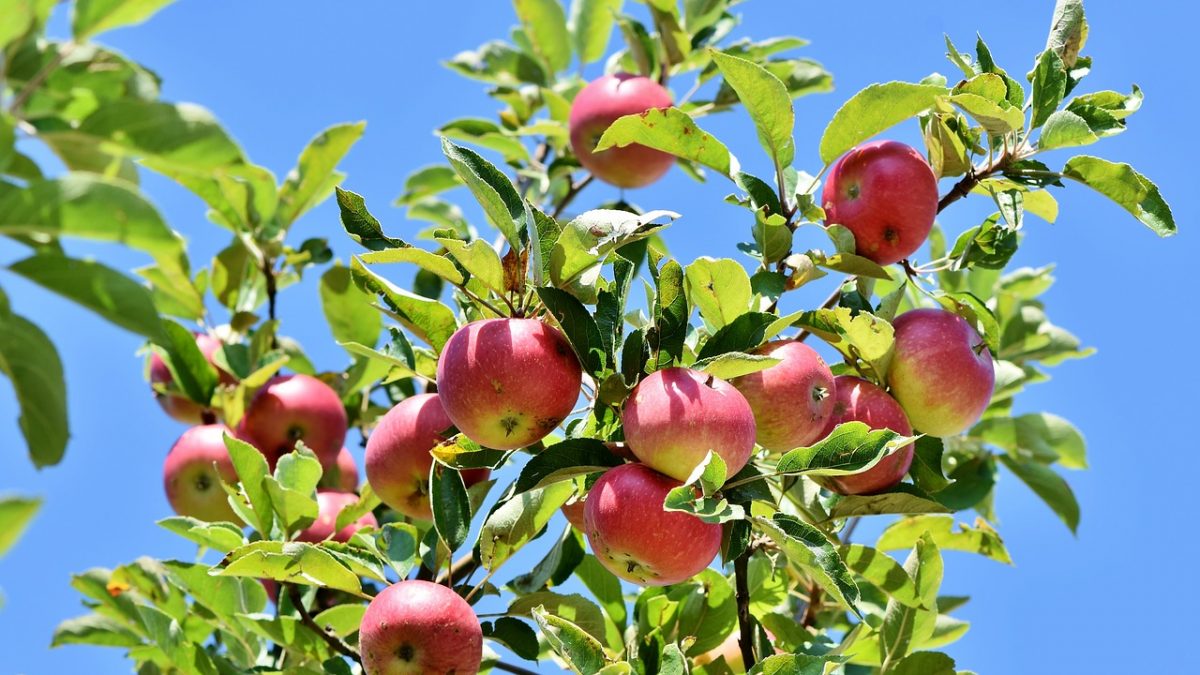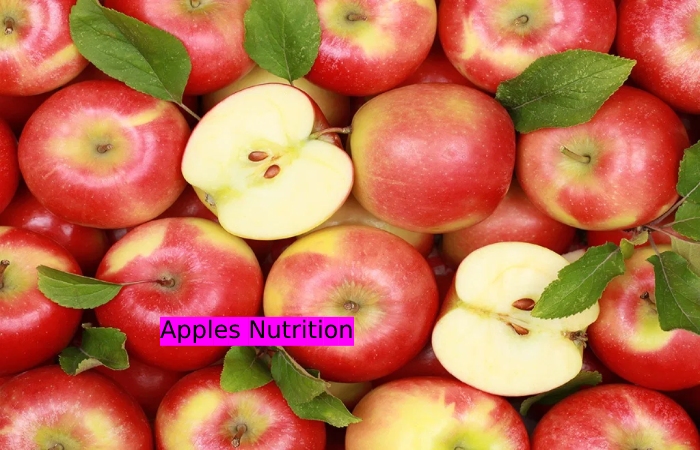Table of Contents
Apple Nutrition – Definition –
Apple Nutrition every day keeps the doctor away? Apples are undoubtedly famous—ranking among the top three fruits produced worldwide. They are easy to store and transport, and as a result, are typically available year-round in the U.S. In this piece, we’ll explore how apples may benefit health and the best types for baking versus munching straight off the core.
Apples are a popular fruit, containing antioxidants, vitamins, dietary fibre, and a range of other nutrients. Due to their varied nutrient content, they may help prevent several health conditions.
Apples come in various shapes, colours, and flavours and provide a range of nutrients that can benefit many different aspects of a person’s health.
For example, they may help reduce the risk of cancer, obesity, heart disease, diabetes, and several other conditions.
In this article, learn more about the nutritional content of apples and how they may benefit a person’s health.
Neurological Health with Apples Nutrition
Apples are rich in quercetin and pectin, which supply apples with their health benefits. [1] Quercetin is a flavonoid, a naturally occurring plant chemical with antioxidant and anti-inflammatory effects.
Pectin is a type of soluble fibre that may help prevent constipation and modestly lower LDL, the “bad” cholesterol. Beneficial bacteria also ferment pectin in the colon, which produces short-chain fatty acids that may play a role in preventing chronic diseases, including certain cancers and bowel disorders. [2,3]
Fresh, whole apples offer the most nutrients. Discarding the skin removes much of the fibre and the majority of flavonoids. Dehydrating or drying the apples removes vitamin C, predominantly in the flesh. In addition, sugar (along with extra calories) to dried apples. Clear apple juice undergoes filtering and pasteurization, removing most of the flavonoids and fibres. [3]
Overall, research shows a benefit when adding apples to the diet. The studies below looked at the health effects of apples in the diet over time or examined the impact of specific phytochemicals in apples.
Facts and Health Benefits of Apple Nutrition
Apple Nutrition Facts
One medium-sized apple (200g) provides 104 calories, 0.5g of protein, 27.6g of carbohydrates, and 0.3g of fat. Apples also provide fibre, potassium, and vitamin C. The nutrition information is provided by the USDA.1
Calories: 104
Fat: 0.3g
Sodium: 2mg
Carbohydrates: 27.6g
Fibre: 4.8g
Sugars: 20.8g
Protein: 0.5g
Potassium: 214mg
Vitamin C: 9.2mg
Vitamin A: 6mcg
Carbs in Apples
A medium apple has 27.6 grams of carbohydrates, with 4.8 grams of fibre and almost 21 grams of natural sugar. Apples have a low glycemic index between 34–38.2
Lists of Diseases Which Trust Apple Nutrition
Cholesterol with Apple Nutrition
One 2013 study found that eating raw apples lowered levels of low-density lipoprotein cholesterol among healthy people, but drinking clear apple juice did not have the same impact. Therefore, the authors conclude that it is the fibre in apples that helps reduce cholesterol.
Get some more tips for lowering cholesterol here.
Heart Health by Apple Nutrition
Apples contain trusted Source fibre, vitamin C, antioxidants, and potassium. A medium-sized apple provides trusted Source the following:
13–20% of a person’s daily fibre needs
9–11% of a person’s daily vitamin C needs
4% of a person’s daily potassium needs
Fibre appears to help manage blood pressure, reducing the risk of cardiovascular disease.
Vitamin C is an antioxidant that, alongside other antioxidants, may play a sole trusted Source in protecting some aspects of heart health. Vitamin C may also boost the immune system and help defend the body from infections and diseases.
Potassium helps relaxTrusted Source the blood vessels, reducing the risk of high blood pressure and cardiovascular complications.
Risk of Type 2 Diabetes
Diabetes
In 2013, a population study found that people who replaced three servings per week of fruit juice with the same amount of whole fruit, including apples, had a 7%Trusted Source lower risk of developing type 2 diabetes than those who did not eat fruit.
Also, those who consume the most fibre have a lower risk of developing type 2 diabetes, suggested one 2011 review trusted Source. People who already have diabetes and follow a high fibre diet may also have lower blood sugar levels.
The American Diabetes Association recommends eating fresh fruit, including apples, to satisfy a sweet tooth and provide nutrition. However, they remind people to account for the fruit’s carbohydrate content.
A medium apple contains Trusted Source 25.1 g of carbohydrate, 18.9 g is sugar. However, it also provides fibre and other nutrients, which means that, as a sweet snack, it has additional health benefits.
Is yoghurt Good for People with Diabetes? Find out here.
Cancer
Consuming antioxidant-rich foods may help prevent Trusted Source the oxidative stress that causes cell damage and may lead to certain cancers. Apples are a good source of antioxidants.
One meta-analysis from 2016 concluded that consuming apples may help lower the risk of lung cancer, breast cancer, and colorectal cancer, among other types.
Fibre may also help reduce the risk of colon cancer, according to a meta-analysis Trusted Source published in 2018.
Learn more about the link between cancer and diet here.
Obesity
According to a 2019 rodent study, Trusted Source, apples contain bioactive compounds that may help promote healthy gut bacteria, which may help optimize the health of people with obesity.
The authors looked at how eating apples might affect the gut microbiota of rats. The changes they observed suggested that apple consumption may help humans with obesity.
Conclusion
The peels of apples contain beneficial nutrients such as fiber, vitamins, minerals, and antioxidants. Whenever possible, people should consume the edible peels of fruits, including apples, pears, and peaches, to take full advantage of all of the nutrients the whole fruit offers. Peeling apples will lower the fiber and overall nutrient content of the fruit.
Research has shown that although the flesh and the peel are highly nutritious, the peel contains certain flavonoid antioxidants that the meat does not.
Additionally, one study demonstrated that the antioxidant activity and cancer-fighting properties were significantly higher in apple peel than in the flesh, regardless of the type of apple.
So, to get the most out of an apple, eat the peel. However, be sure to properly wash the apple before consuming it to reduce the chances of ingesting contaminants such as pesticides.
Also Read: White Elephant Gift -Ideas, Types, Benefits, Lists, And More



